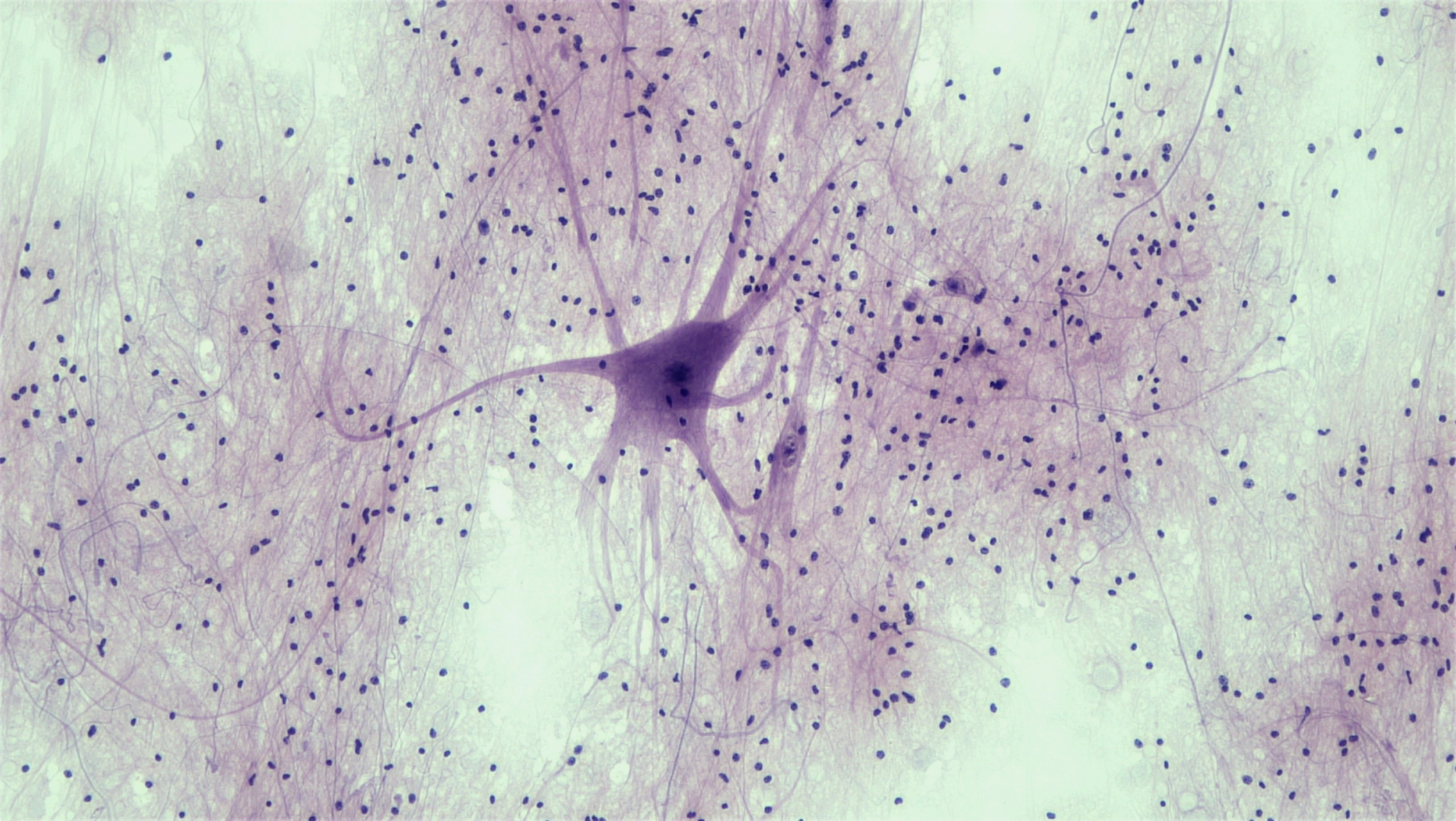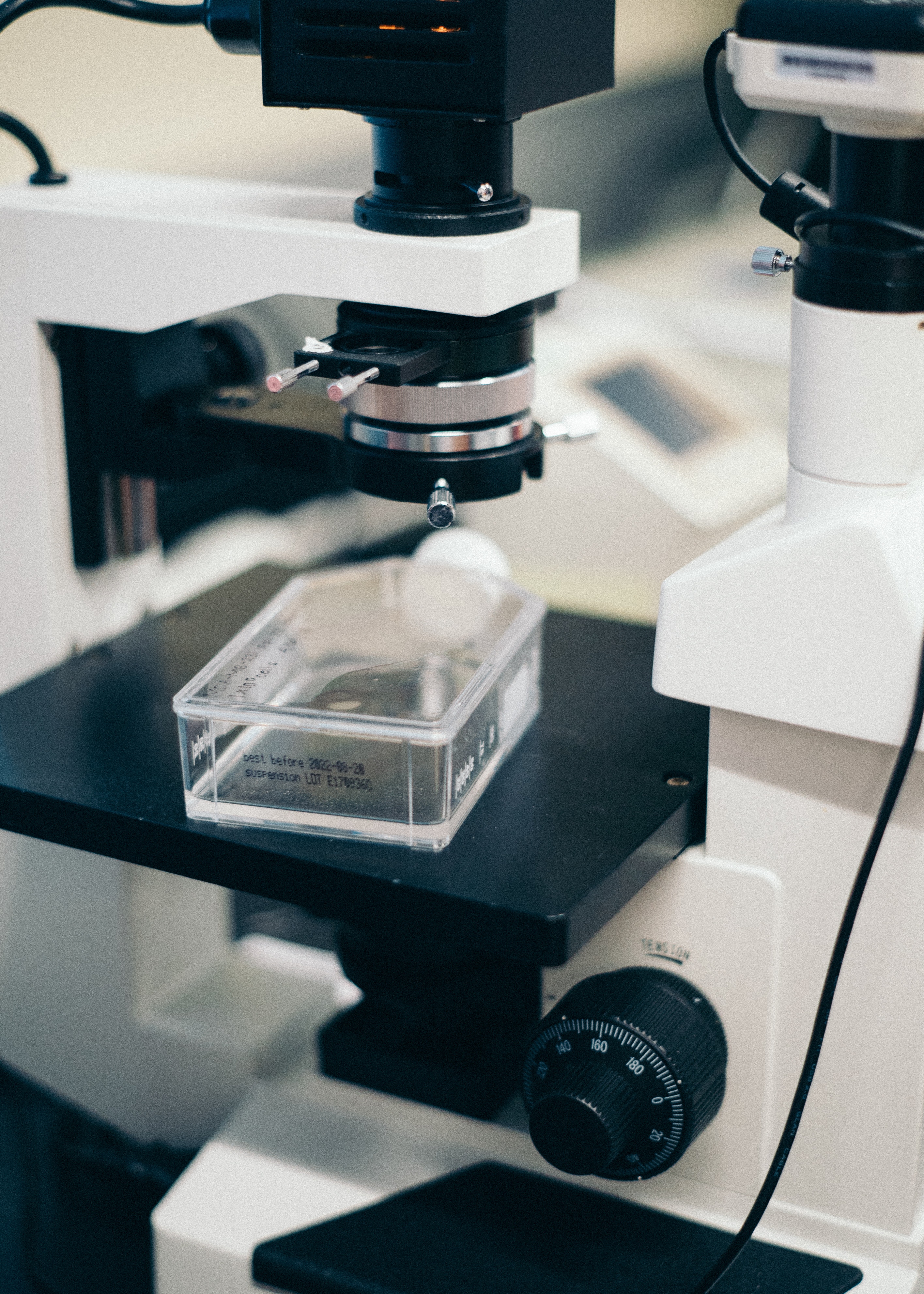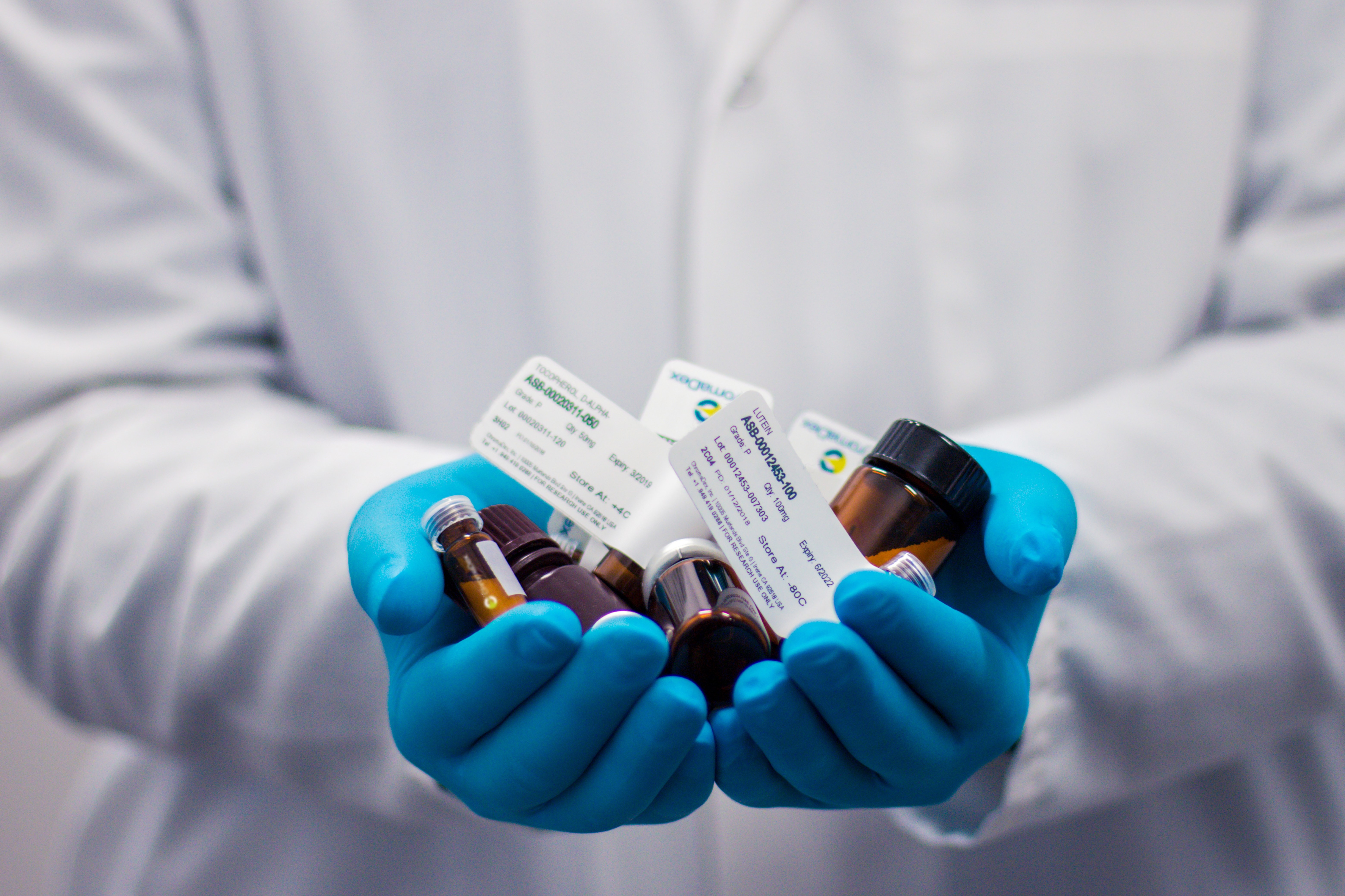Testing drugs on stem cells in petri dishes may revolutionize our understanding of difficult-to-study diseases
Remember the Ice Bucket Challenge? This is even more exciting for ALS patients.
In the summer of 2014, the Ice Bucket Challenge went viral. Videos of people pouring buckets of ice and water on their heads exploded across Facebook and Twitter. But beyond a viral trend, the challenge morphed into a campaign to find a cure for Amyotrophic Lateral Sclerosis, or ALS.
ALS is a devastating, incurable neurodegenerative disease characterized by progressive paralysis that takes patients' lives in as few as 2-5 years. The online campaign generated massive awareness and funds for ALS research, which is important because, until recently, little has been known about both the genetics and mechanism of disease.

Motor neurons are special cells that help us move our bodies
Berkshire Community College Bioscience Image Library on Flickr
This is because the type of cells involved in ALS – called motor neurons – are difficult to study. Motor neurons are a type of nerve cell responsible for movement within the body. In ALS, these cells slowly die, leading to progressive paralysis. Motor neurons are impossible to study in a live human since a biopsy would lead to irreversible nerve damage. Therefore, scientists knew that these cells were dying in patients with ALS, but had no way to determine how.
Until now.
In a study published in Nature Medicine in 2018, researchers developed a strategy for creating proxy nerve biopsies of ALS patients. They made patient-specific motor neurons in a dish and induced them to mimic the symptoms of ALS. They found that the dish-derived motor neurons died faster than motor neurons from healthy patients, and that they had the same cellular characteristics seen in post-mortem samples.
The researchers made these proxy nerve biopsies using a technique called "cellular reprogramming". First, they took adult skin cells from ALS patients and grew them in a dish. Then, they delivered a set of molecules (called "Yamanaka factors") that directed the skin cells to turn back into stem cells. Stem cells are a kind of "square one" for cells in the body – they are a "stem" that can "branch" off into other kinds of cells. Finally, scientists turned those stem cells into nerve cells. Since those stem cells came from an ALS patient, these new nerve cells mimicked the conditions of nerve cells sickened in an ALS patient.
The researchers then performed a drug screen on the dish of ALS-afflicted cells to see if they could identify a compound that would extend the life of ALS patient motor neurons. They delivered a library of 800 different drugs to the cells and measured their lifespans. Of these drugs, one particular drug increased the lifespan of ALS patient neurons to that of healthy motor neurons.

The drug the researchers identified (which they call "PIKfyve inhibitor") had previously been used to target inflammation, but had never been tested for patients with ALS. PIKfyve inhibitor works by increasing the size and number of lysosomes, which are parts of the cell that clean up waste and debris.
To further investigate how the drug worked in ALS cells, the researchers used microscopes to look inside the cells. They found that toxic protein clumps clogging up diseased cells were reduced. These cells also had increased cellular machinery to dispose of and clear cellular waste. Delivery of the drug in live mice showed the same cellular effects, suggesting that this drug may have therapeutic potential for ALS.
In an interview, Justin Ichida, the principal investigator of this study, emphasized that this is the first step to discovering drugs that will work in patients. “This is really a prerequisite for any drug to work in a patient,” Ichida told me. “For the first time, we’re able to find drugs that [correct the disease in neurons] before we test them in real patients. I think this is going to increase our success rate in finding drugs that are efficacious against a historically difficult to treat disease like ALS.”
But beyond ALS, this strategy is a testament to the use of stem cells to model disease. “Most people know about using stem cells as a cell therapy, where you would actually inject them into the body and they would form a tissue that needs to be replaced,” says Ichida, “but this method of using them to discover drugs is incredibly powerful.”
In fact, using stem cells as cell therapy has come under fire recently, with critics of stem cell biology noting that not a single cell therapy using stem cells has been approved by the FDA for treatment of disease. Criticism has been especially harsh in California, where lawmakers plan on placing a proposition on the ballot in 2020 to provide $5 billion in funding for stem cell biology. This comes after California’s proposition 71 in 2004, which allocated $3 billion to stem cell research and has yet to result in a cure.

Creating new stems cells in the lab allows researchers to test thousands of drugs at once
But perhaps the lack of cure has been due to the focus on using stem cells as cell therapy, rather than for modeling disease. As Dr. Ichida notes, stem cell modeling has the potential for revolutionary therapeutic development. “The advantage of what we have is we have a human model of a disease, which is much more accurate in certain ways than the sorts of animal mimics we have had in the past,” he says. “In mice, you are very limited in the number of drugs you can test. In a human cell model, you could test thousands or millions of drugs.”
This increased scope of drug development is what makes Dr. Ichida hopeful about this application of stem cell biology. “We can now say, 'I admit that I really don’t know what the best pathway is going to be to rescue the loss of these nerve cells,'” he says. “Instead, I’m just going to screen all pathways. The stem cell technology that is happening is revolutionizing the way we discover drugs.”
Peer Commentary
Feedback and follow-up from other members of our community
Monica Javidnia
Neuroscience
University of Rochester
Drug discovery and development is routinely hindered by the lack of appropriate models to recapitulate a given disease. Countless clinical trials fail to show efficacy, despite promising animal, cell, and smaller-scale human studies. Shifting gears for a moment to a patient or potential clinical trial participant’s point of view, how many models would you like an experimental intervention tested in before you sign up for a trial? How many independent labs should confirm the findings?
Similar to the Shi et al, 2018 study in Carina’s article, in 2017, Imamura et al generated motor neurons from an ALS patient and screened 1,416 compounds, with many of the “hits” pointing to a specific signaling pathway. The researchers used both genetic and pharmacological approaches in the motor neurons then tested a drug using an ALS mouse model to confirm their findings. The drug, bosutinib, and related drugs are currently in clinical trials for other neurodegenerative diseases such as Dementia with Lewy Bodies, Parkinson’s disease, and Alzheimer’s disease.
The brain is arguably more difficult to study than other organs, as we have few (or no) tools to know what is happening on a cellular/molecular level until an autopsy is performed. Thus, stem cells provide a great approach to understand the complexities of diseases such as ALS. Further, given the heterogeneity within patient populations, stem cells are particularly exciting, as we may be able to determine whether an individual will respond to a treatment.
Claudia López Lloreda
Neuroscience
University of Pennsylvania
Thanks Carina for this article and highlighting the importance of stem cell modeling in an era where animal models are under a lot of scrutiny. As Monica mentioned, I think the most powerful thing about stem cell modeling is being able to recapitulate the heterogeneity observed in human disease.
Initially, the neurodegeneration field was focused on targeting the initial production of toxic protein aggregation (such as targeting BACE1 with inhibitors in Alzheimer’s disease to halt amyloid-beta production). I think with time, this has proven to be a lot harder than initially thought since why this production occurs doesn’t seem to be extremely clear. Now evidence is supporting the idea that enhancing clearance mechanisms could be a better solution. This is supported by this study where the PIKfyve inhibitor enhanced lysosomal function and consequently rescued neurodegeneration in iPSC-derived motor neurons from ALS. I sense many more studies will start targeting these clearance pathways to ameliorate disease, rather than targeting production.
Katherine Basil
Neuroscience
Maastricht University
This is great research! I believe the future truly lies in stem cell technology. We are advancing the science and technology at a very fast pace and this will have massive implications for several neurological and psychiatric disorders.
What really caught my interest in your article Carina is that the focus on stem cells as therapy might not be as promising (at least for the moment) as using stem cell technology for drug screening but also simply modelling brain diseases and better understanding the underlying mechanisms.
Since we are slowly moving away from animal studies, it seems only relevant to start asking those questions as proposed by Monica. Stem cell technology is surely an uncharted territory and we are slowly developing it and improving it. But how to efficiently translate it to the clinic will also have to be discussed as the technology gets more and more advanced.
On another note, stem cell technology might also be promising for personalised medicine, especially that not all patients will respond similarly to a certain drug. What is promising about this research is that patients will be prescribed medication that has previously been tested using their stem cells to ensure maximum efficiency and safety.
As a scientist working with stem cells, I am truly looking forward to the discoveries that will be made using this promising technique. It is uplifting to see that other scientists are equally enthusiastic.
Xinwen Zhu
Systems Biology
Boston University
Thanks for the article! I am very excited about about the use of stem cell derived models for both basic research and drug screening, but to add to the above point about genetics: this strategy of creating a disease model by turning skin cells into stem cells and finally into the cell type of interest only works because the preserved genetics are the cause of the disease. In other words, the skin cells have the same mutations that cause the disease in the patient’s motor neurons, so we can expect that motor neurons made out of them will retain the mutations and thus the disease. This process of deriving different cell types from stem cells effectively erases many epigenetic marks and other cellular memories of environmental conditions - so I do wonder if this could teach us anything about sporadic ALS (which may be caused by environmental factors) or if the treatments identified in these models work in the sporadic cases as well.